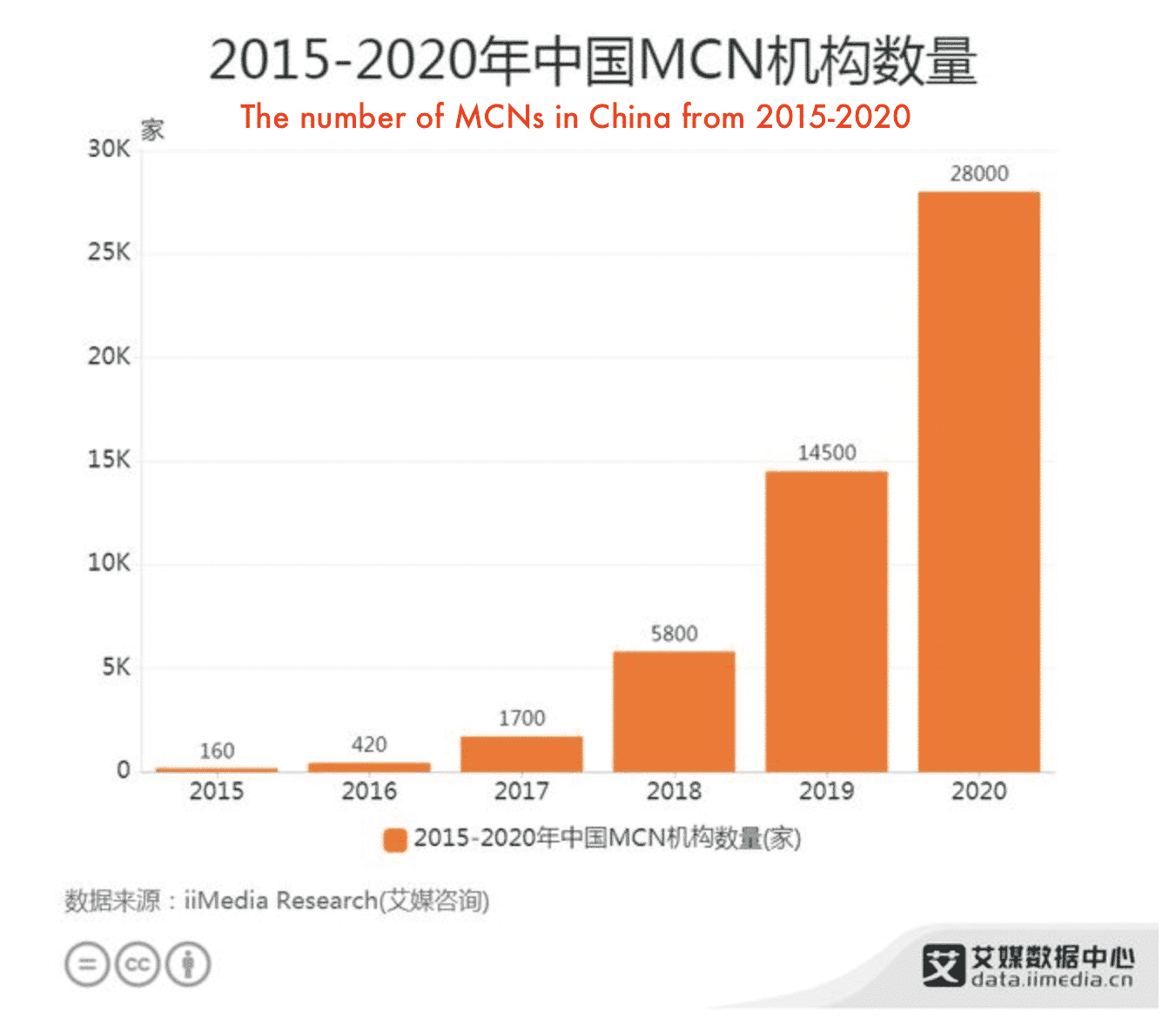In past years, Key Opinion Leader (KOL) campaigns were considered a novel method to communicate with Chinese consumers. However, nowadays they are an essential part of campaign dissemination in the East. According to iiMedia Research, the number of Chinese Multi-Channel Networks (MCNs) has grown rapidly from 160 in 2015 to 28,000 in 2020 - 175 times larger in just five years. As more and more KOLs are incubated by MCNs, the way they approach followers has become formulated and so the majority of their content is becoming increasingly similar.
Being faced with homogenized content, people are beginning to tune out, and it’s becoming harder for brands to have overwhelming success by conducting KOL campaigns. This is in part because some of the rules in the industry have changed, and so to better navigate these changes and help maximize your China marketing strategy, we'll walk you through 5 key steps to creating a successful KOL marketing campaign.
In this article you’ll learn…
Step 1: A clear objective is the cornerstone
What do you want to achieve by investing in a Key Opinion Leader campaign? Is driving sales your ultimate objective? Or is it the attention you want to bring to your brand through the activation, or your brand image that you want to build?
These three questions are essential to ask before embarking on a KOL-supported campaign, as too often brands want to achieve all of these elements within just one campaign. But without a clear vision, the guideline that brands deliver to KOLs might be confusing or misleading. And thus, the content created based on the guideline becomes vague and doesn't reinforce marketing objectives.
Take fashion brand Tory Burch as an example, which conducted a campaign with Chinese top fashion Key Opinion Leader Mr.Bag in July 2021. The event was a tea party and Mr.Bag invited around 40 followers who are based in Shanghai to the brand’s flagship store at Jing An Kerry Center. Followers had a tour of the store, listened to Mr.Bag’s introduction of Tory Burch’s classic bags, and watched models presenting the brand’s apparel. The campaign was not sales-driven, although followers were given special discounts on that day, however, no one was encouraging them to buy anything. The sales numbers generated from this campaign event may not have been large, but it was a special experience for these followers to connect with Mr.Bag and have an intimate way to build up their awareness of the Tory Burch brand and products.
Step 2: Decide who to work with
This is a crucial step in a KOL marketing campaign, as deciding who to work with directly influences the spending and overall effectiveness of a campaign. But this is also the most complicated step for brands.
It’s getting harder for brands to find well-matched Key Opinion Leaders due to the increasing number of KOLs in the sector. What makes the selection part quite tricky is that the KOL who has the largest number of followers is not necessarily a perfect candidate for a campaign. Brands have to take many elements into consideration, such as determining whether the amount of followers that a KOLs has is authentic or not, follower engagement and interaction, their media impact, prices, as well as brands that they have worked with before… The list goes on.
Choosing the right KOL is vital, and it requires a huge amount of time from brands. An influencer marketing tool that can evaluate and tells brands which KOLs are most suitable for a campaign is an immeasurable asset to a brand’s campaign and planning process. Leveraging digital tools helps break down key KOL metrics including impact, community, cost efficiency, relevancy, activeness, and content creativity. The importance of each metric should be adjusted to align with the goals of the brand. After each evaluation, a brand can save this list of recommended influencers along with their overall score for future reference. And if brands already have someone in mind to work with, they can manually add KOLs into such a platform and receive a list, marking both added or recommended KOLs based on the six metrics.
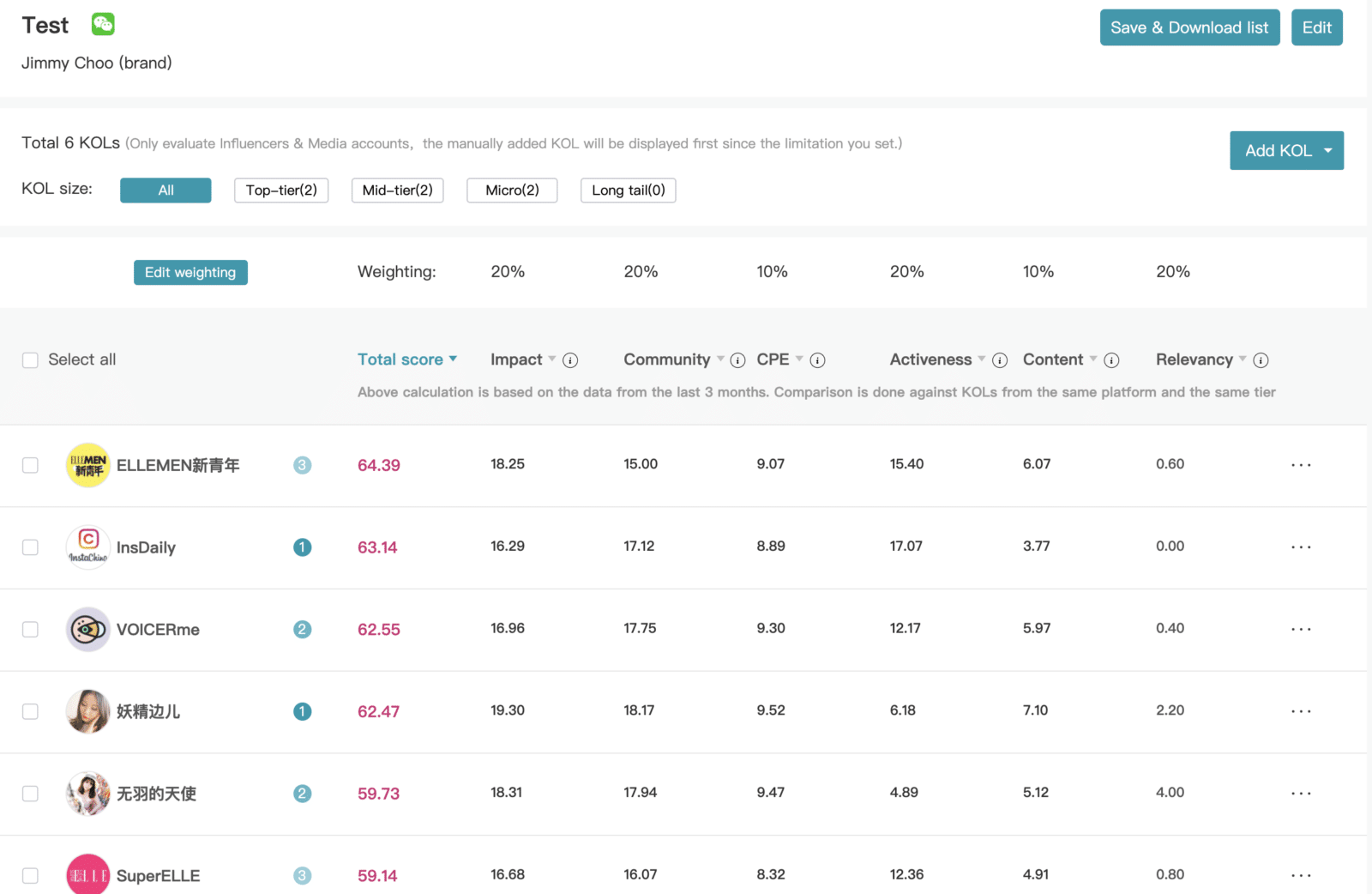
Besides analyzing brands themselves, another way to source KOLs is to check competitor activity. Launchmetrics' Influencer Marketing Software for China allows brands to discover the top 100 Key Opinion Leaders for a specific brand. Brands can learn the tiers of those specific KOLs, their Media Impact Value™ generation, the number of related posts, their engagement rate, and the percentage of estimated sponsors. With this tool, brands can also check their own results to see who has achieved the best outcome in previous campaigns and evaluate the success of the partnership ahead of future collaborations.
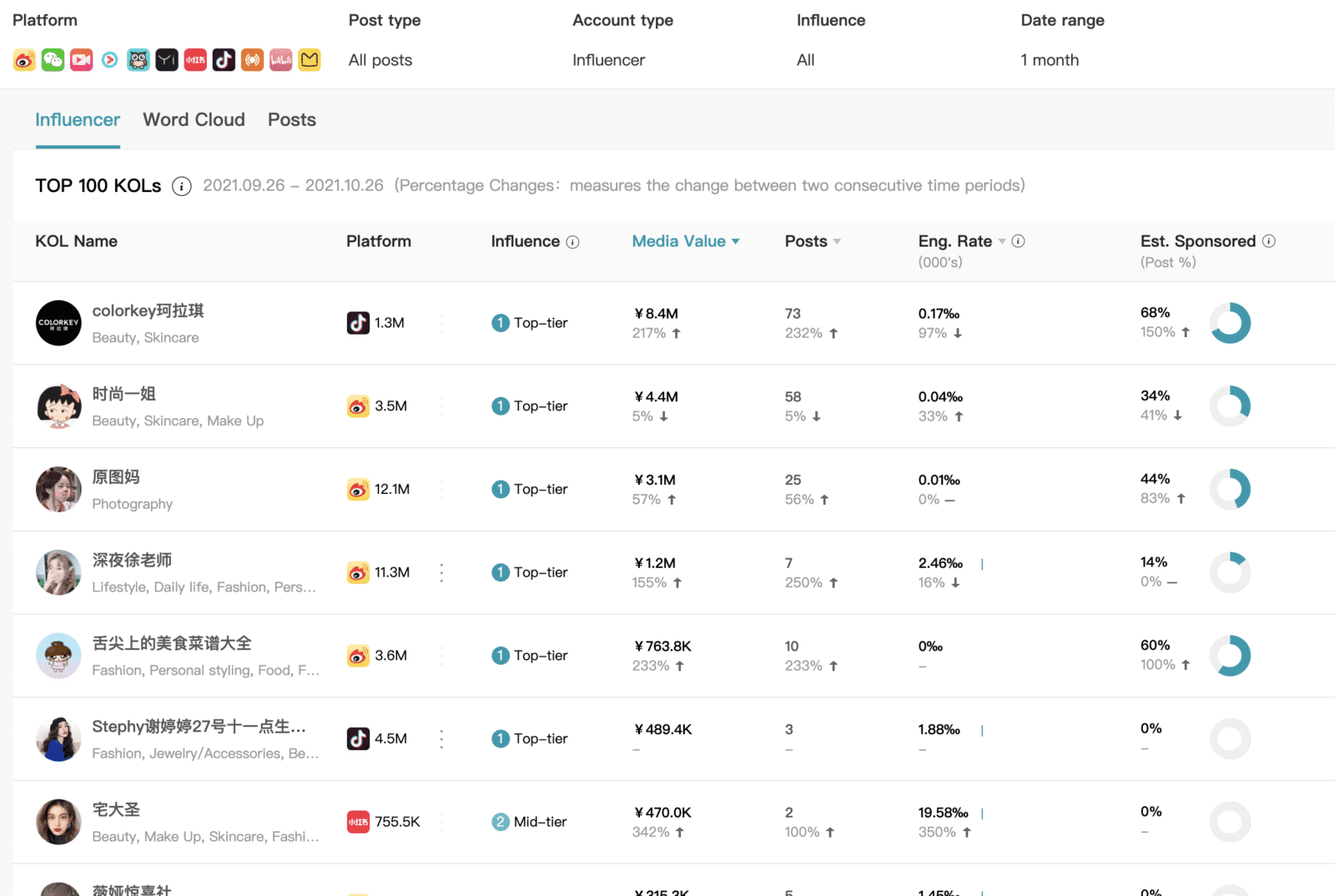
Step 3: Determine where to run your campaign
Choosing the right platform matters. The popularity of Chinese social media apps varies for people in different age groups and within different communities. Understanding the audience that you want to target in a campaign and sourcing corresponding platforms based on the demographics is essential to getting the best possible results.
If you are not sure which are the best Chinese platforms for your campaign, first have a look at what your competitor is doing. Through the use Influencer Marketing Software that is designed for China, brands can access brand libraries and precision keyword search tools, which will give clarity on the influencer usage of competitors during specific time periods and on which social platforms competitors are most active.
With an effective analytics module, brands can compare and benchmark their campaigns or a given time period based on metrics such as the number of influencers, impressions, amount of posts, engagement, and types of social media platforms.
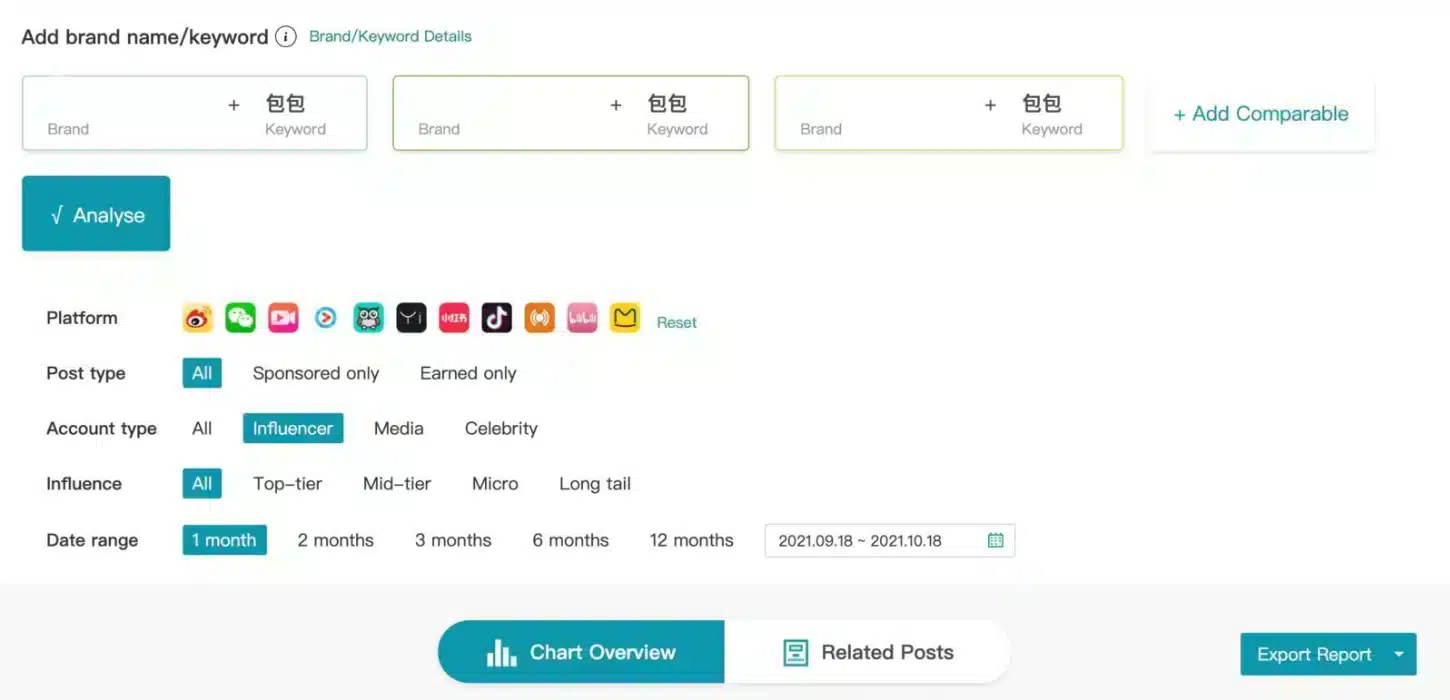
Step 4: Create top campaign content
The next step that brands will have to think about is the content for Key Opinion Leaders to post. If you are selecting KOLs from a specifically designed digital tool for KOL campaigns, such as Launchmetrics' Influencer Marketing Software for China, then KOLs will be divided into several categories which will help track the progression of your KOLs content creation process. If they are in the ‘Creating Content’ stage, it means those KOLs are in the process of writing and have not submitted drafts to be reviewed. KOLs in the ‘Pending’ list have submitted drafts and are awaiting review. In the ‘Modify’ section, KOLs are revising their drafts based on brand feedback and will appear in the pending list again after submitting another draft. The final step is ‘Approved’ which gives KOLs the go ahead to officially publish on the corresponding platforms.
With the content creation workflow carefully managed in this way, brands can save up to 60% of their time when working on campaigns, especially when they are partnering with multiple KOLs in one campaign.
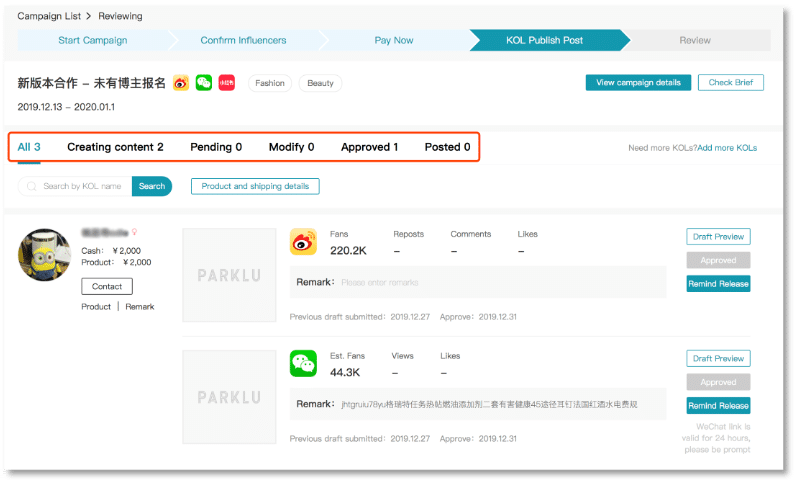
Step 5: Review the campaign results
Reviewing a campaign is the last step to determine the success of a KOL campaign, however, it doesn’t mean brands can take a deep breath and relax. The data gathered through this final step tells brands whether their investment has been worth it or not, and ultimately whether they chose the right KOLs and social platforms for the campaign.
In order to break down campaign results and the Media Impact Value™ achieved, the right digital tools should provide the information needed to reflect on campaign choices and collaborations. After KOLs have posted their content and uploaded the corresponding links, a digital platform like Launchmetrics' Influencer Marketing Software for China will automatically track and generate a report.
What will the report include?
- The number of people a campaign reaches, including different social media platforms
- The volume of engagement by looking at reposts, comments, and likes
- Brand spending across different channels
- Click performance
- Media Impact Value™ and Return on Investment (ROI)
- Sales ROI
- Conversions
All these elements are quantified and presented in easily understood formats such as pie charts and histograms.
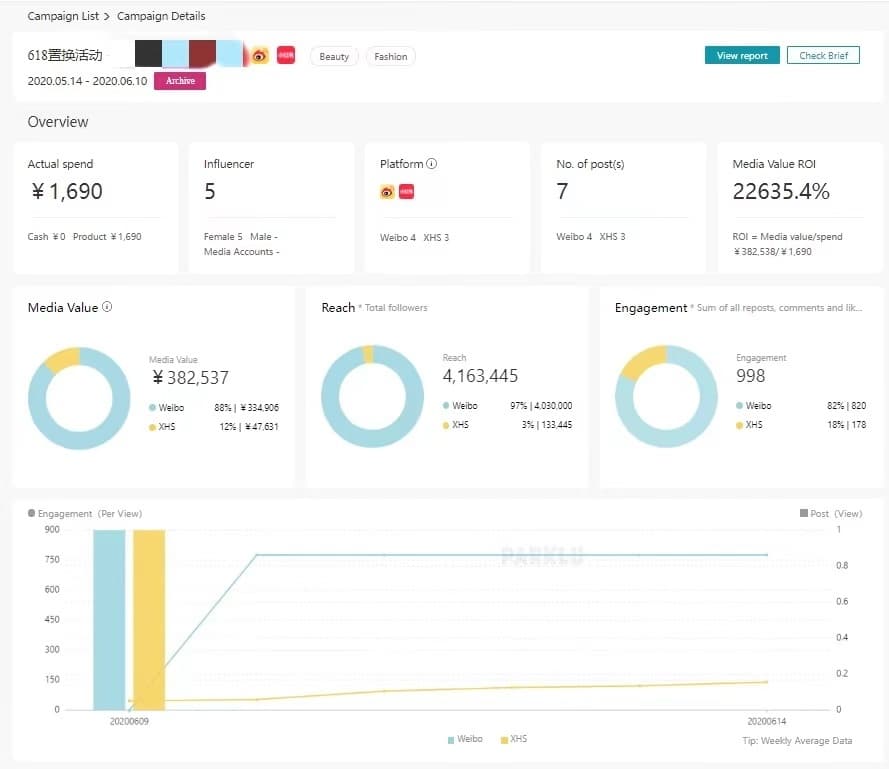
These five steps are essential to developing, managing, and ultimately evaluating a successful KOL campaign for brands in the fashion, luxury, and beauty sectors. In order to leverage opportunities and ensure a competitive edge, brands must utilize benchmarking reports about competitor analysis, as well as reports that detail brand performance and influencer marketing efforts.
A dedicated KOL management app provides access to the KOL community, and the ability to explore campaign-specific pricing, manage workflows including briefs, KOL recommendations, creative management, content approval, as well as generate automated campaign reports.
By closely managing the campaign process and understanding the results, brands can adapt their strategies, keep up with the latest changes, and gain a deeper understanding of their consumers and the impact of KOL marketing.
To learn more about how to successfully manage KOL campaigns and grow your brand's influence in China - request a demo by clicking the banner below!

